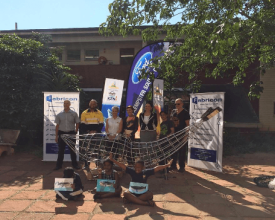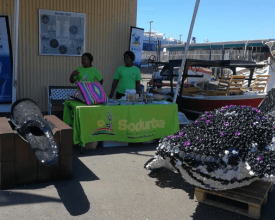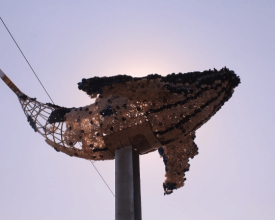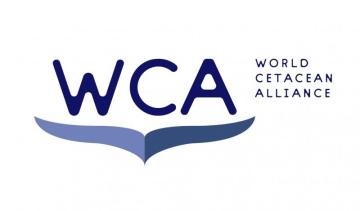
The Evolution of a Region: A Sea Change for Durban’s Former Whaling Industry
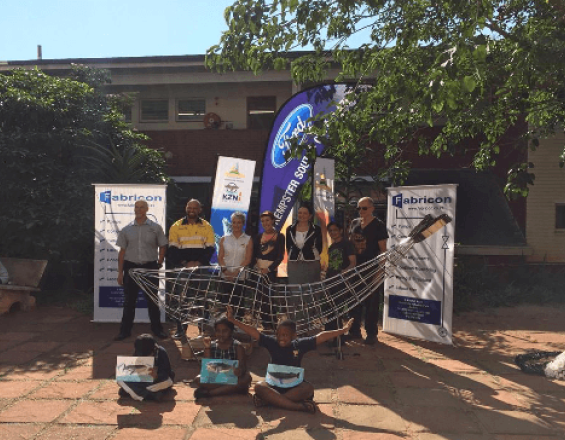
The Whale Heritage Site (WHS) program is a replicable model that recognises locations that demonstrate the importance of whales, dolphins and ocean habitats through culture, education, protection & conservation solutions.
The Bluff is the first WHS in a developing country - a flagship for other communities in the region. Its journey from whaling mecca to a beacon of hope for marine conservation and sustainability is profound.
The WHS program empowers coastal communities to champion cetaceans and biodiversity. It showcases their relationship with the ocean by encouraging coexistence; celebrating cetaceans in culture, arts and events; working towards environmental sustainability; and developing research and education programs.
The Bluff has seen sustainable practices and livelihoods continually improve. Increased investment in eco-tourism has transformed The Bluff to a place where whales thrive and the local community benefits.
Context
Challenges addressed
The Bluff is an area of outstanding natural beauty and an abundance of wildlife. However, 200 years of whaling saw humpback whale populations decimated. When whaling eventually ceased in 1975, there were only around 600 humpback whales remaining. Whaling once formed a lucrative trade and was a significant contributor to the local economy in this area. Today they remain under threat from commercial activities including shipping, fishing, tourism, and coastal development.
The community in the Bluff - individuals, businesses, educators, artists - are incredibly diverse. All with different attitudes, expectations and relationships to the ocean and to cetaceans. Uniting their voice and ensuring that all those expectations and attitudes are represented in a locally developed solution, and that the WHS program is seen as valuable and relevant to all stakeholders is a challenge.
Location
Process
Summary of the process
Whale Heritage sites must go through a rigerous process to become accredited: an initial online application, a candidacy review, optional technical advice and support, a final application and then, if successful, Whale Heritage Site designation. The process is owner, led and managed by the local stakeholder group throughout every stage.
Building Blocks
Local stakeholder steering group and community empowerment
The building block is built on the principle that a community based initiative to protect cetaceans and their habitats is best done when owned by the local communities itself. It incentivizes, empowers and engages a community and its businesses so that they benefit directly from a healthy and thriving ocean.
To coordinate and facilitate the development of a WHS initiative, a steering committee is formed by local stakeholders. These are enthusiastic, creative and passionate individuals who steer the process and help launch, maintain, and sustain the application process.
An effective WHS steering committee should be fully diverse and inclusive and representative of the community and include staff, volunteers, and community members. Its purpose is to serve as a mobilizing force, not a bureaucracy. Making the process meaningful and purposeful for everyone involved. Within the process there is guidance on establishing sub-committees or workgroups to focus on specific goals and activities.
As well as leading and manageing the process of application, the steering committee must show continual improvement across the community with its various initiatives, through annual reporting as a measure of WHS's excellence.
Enabling factors
It took 2 years and the collaborative efforts of a local steering committee, made up of dedicated and passionate local stakeholder partners (individuals and local organisations), for The Bluff to achieve Whale Heritage Site status. Committee members now work together for positive change. Meeting on a regular basis and continually striving toward the ultimate goal of putting The Bluff front and centre for the conservation and preservation of cetaceans and all the benefits that this provides for the community.
Lesson learned
Enabling and empowering a community to work together requires a clear direction, benefits, and a core team of dedicated stakeholders to drive the project forward locally. It must be community owned at every stage of the process and be fully representative of the community, its needs, its vision and its priorities.
Accreditation process
There is a five-tiered process to becoming a WHS.
1. An initial online application that ensures there are no fundamental prohibitive issues.
2. A candidacy review of the initial application is carried out by impartial representatives.
3. Technical advice to discuss and advise on areas for improvement and on how to submit an application with the greatest chance of success.
4. Final application including supporting evidence, a justification for the geographical delineation of the site and a detailed explanation of how the site achieves each of the criteria.
5. If successful, Whale Heritage Site (WHS) designation. It must then prepare and submit annual reports explaining how criteria are met.
By going through the accreditation process, The Bluff had to show that they could ensure responsible, sustainable practices and livelihoods would be continually improved thus ensuring the health and welfare of whales, dolphins and porpoises and their ocean habitats.
Enabling factors
They were assessed against conditions including supportive legislation, culture, as well as environmental, social and economic sustainability.
They had to provide supporting evidence including statistics relevant to livelihoods, cultural activities, tourists visiting the area, whale-watch tour operators, protected areas, etc.
The Bluff was also obliged to show that community-based research, education, and awareness activities were being conducted.
Lesson learned
Having a clear goal with a clear path towards it, is essential. For a program such as the Whale Heritage site accreditation, there are high standards that must be achieved but there must be a supportive process to help a community navigate their way through it and ultimately achieve that status.
Impacts
The Bluff has become a premier destination for whale-watching, generating significant economic and social benefits. Creating jobs, increasing tourism and investment, and helping build new partnerships. It has also created resilience and additional income streams for a community affected by Covid.
Its importance to stakeholders that represent this region has contributed towards cetacean research and helped change social attitudes towards the environment, ocean habitats and cetaceans.
Art projects, "Whale Trail" walking routes, installations and educational projects, inform, inspire and educate the community and beyond about environmental, ocean and cetacean protection and conservation.
Whales and dolphins continue to face challenges. Pollution, entanglements and climate change are just some of the threats they face. The Whale Heritage Site certification is a replicable solution demonstrating that with a local focus underpinned by global co-operation, we can promote awareness, affect hearts and minds and impact real change through education, sustainability and conservation.
It is hoped that the example set by The Bluff in achieving this gold standard in the protection of cetaceans and their habitats will inspire other coastal areas and communities to follow in their footsteps.
Beneficiaries
Beneficiaries include the local and regional community, indigenous communities, families, businesses, artists, students, authorities, organisations, and of course the cetaceans. Providing economic, social and environmental benefits.
Sustainable Development Goals
Story
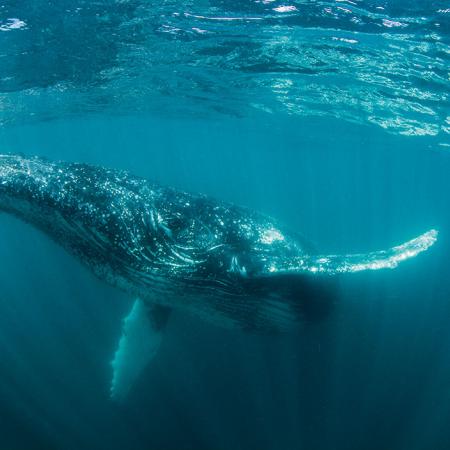
Almost 200 years of whaling saw humpback whale populations decimated. It is estimated that when whaling eventually ceased in 1975, there were only around 600 humpback whales remaining. They were hunted almost to extinction.
But in a remarkable evolution, in just two generations, whales in this region have gone from being relentlessly hunted to passionately protected. The Bluff’s rich heritage and long whaling history are forever captured in the museum that has been transformed from an old whaling station to a place that now serves to educate the public about wildlife and the importance of ocean conservation.
“Conservation is a gift to my children and to theirs.” Tim Choate, Chair of Wild Oceans which led the Whale Heritage Site application.
